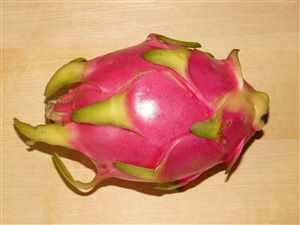Dragon fruit (Hylocereus), Pitahaya, Pitaya (Stenocereus)
Main Facts about Dragon fruit

Using Dragon fruit
Dragon fruit contains around 60 calories and is rich in vitamin C, B1, B2 and B3, and minerals such as iron, calcium, and phosphorus. It has a very low amount of cholesterol and is an excellent source of monounsaturated fats. High fiber content in dragon fruit can help with digestion and constipation. It can also stabilize blood sugar levels by suppressing sugar spikes which can be useful for diabetes patients. You can even make an anti-aging mask mixing it with honey or protect colored hair with dragon fruit juice. Dragon fruit paste can help you to fight acne or sooth sunburned skin.Cooking with Dragon fruit
Dragon fruit is eaten row. Only the inside part is edible. It is also used to flavor drinks and pastries. Unopened flowerbuds are cooked and eaten as vegetables.How to grow Dragon fruit
Dragon Fruit grows best in dry, tropical or subtropical climates where annual rainfall ranges from 20-50" per year. In wet, tropical zones, plants may grow well but sometimes have problems setting fruit reliably. It is recommended to grow them in soil that is supplemented with high amounts of organic material. The plant has been grown successfully in sandy soils. Shade is sometimes provided in hot climates.| Dill |
Echinacea
|